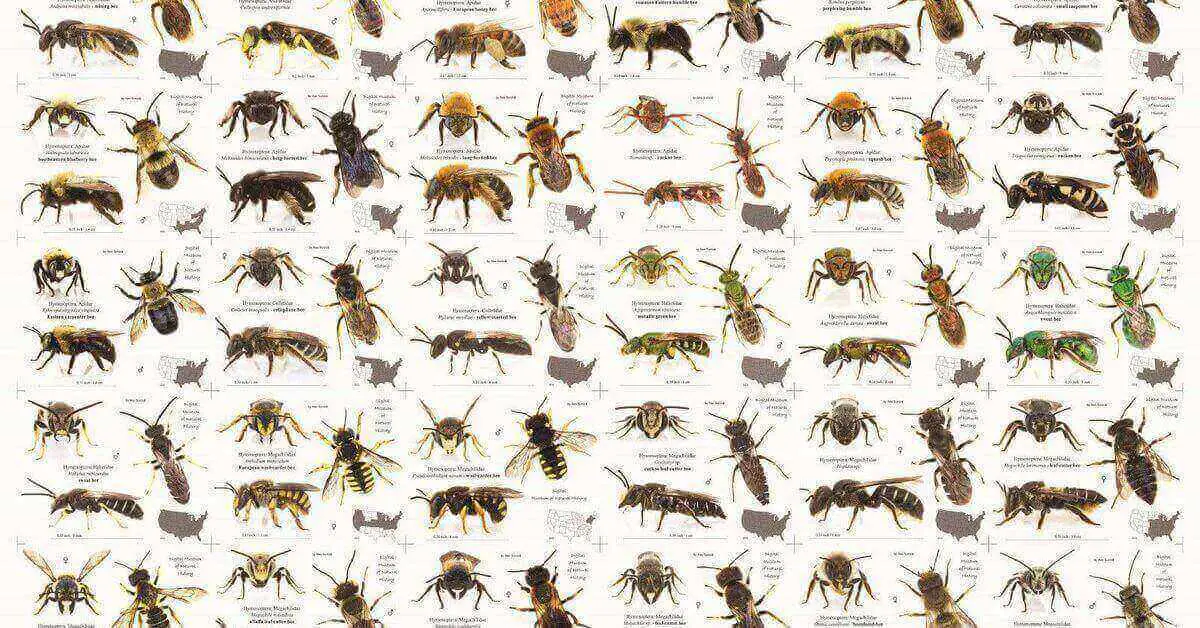Black bumble bees, also known as Bombus melanopygus, are a unique and intriguing species of bees that have captured the interest of entomologists and nature enthusiasts alike. With their distinctive appearance and important role as pollinators, black bumble bee play a vital role in our ecosystem. In this article, we will explore the characteristics, habitat, behavior, and conservation efforts surrounding these fascinating creatures.
The Beauty of Black Bumble Bees
Black bumble bees are visually striking insects with their fluffy black bodies and vibrant yellow bands. They belong to the genus Bombus and are commonly found in various regions of North America. These bees have adapted to a diverse range of habitats, including meadows, grasslands, woodlands, and gardens.
Physical Characteristics
Black bumble bees are medium-sized bees, measuring around 1.5 to 2 centimeters in length. They have a robust build and are covered in dense black hair, which gives them their distinct appearance. The black coloration serves as a protective mechanism, allowing them to absorb and retain heat more efficiently, especially in cooler climates.
Habitat and Distribution
Black bumble bees have a wide distribution across North America, ranging from British Columbia and Alberta in Canada to California and Mexico in the south. They are commonly found in areas with abundant floral resources and suitable nesting sites. These bees exhibit a preference for open habitats, but they can also be found in urban environments, making use of gardens and parks as foraging grounds.
Social Structure and Behavior
Black bumble bees are social insects, forming colonies with a queen, workers, and males. The queen initiates the colony in the spring by establishing a nest and laying eggs. As the colony grows, the workers take on various tasks, including foraging for nectar and pollen, caring for the young, and defending the colony. Male bees, also known as drones, emerge later in the season, and their primary role is to mate with new queens.
Life Cycle of Black Bumble Bees
The life cycle of black bumble bee begins with the emergence of the queens from hibernation in the spring. After mating, the queen searches for a suitable nest site, such as an abandoned rodent burrow or dense vegetation. She constructs a small waxen pot, known as a honey pot, where she lays her eggs. The eggs hatch into larvae, which are fed by the queen until they pupate and eventually emerge as adult workers. Towards the end of the summer, new queens and males are produced, and they leave the colony to mate and start new colonies the following year.
Read More:
Bees vs Hornets: A Comparison of Stings & Nests, Identification
Importance as Pollinators
Black bumble bees are crucial pollinators, playing a vital role in the reproduction of numerous plant species. As they forage for nectar and pollen, they transfer pollen from one flower to another, facilitating fertilization. This process contributes to the production of fruits, seeds, and overall plant diversity. The decline of pollinators, including black bumble bee, can have detrimental effects on ecosystems and agriculture.
Threats and Conservation
Like many other bee species, black bumble bees face various threats that impact their populations. Habitat loss, pesticide use, climate change, and diseases are among the significant challenges they encounter. To conserve black bumble bee, it is essential to protect and restore their habitats, minimize pesticide usage, and raise awareness about their ecological importance. Engaging in pollinator-friendly practices, such as planting native flowers, can greatly contribute to their conservation.
Tips for Encouraging Black Bumble Bees in Your Garden
If you are interested in attracting black bumble bees to your garden, there are several steps you can take:
- Plant a diverse range of native flowers that provide nectar and pollen throughout the growing season.
- Provide nesting opportunities, such as leaving areas of undisturbed vegetation or installing artificial nesting boxes.
- Avoid using pesticides and opt for natural pest control methods.
- Create a water source, such as a shallow dish with rocks for bees to land on and drink from.
FAQs
Are black bumble bees aggressive?
Black bumble bee are generally not aggressive unless provoked or threatened. They are more focused on foraging for nectar and pollen and are unlikely to sting unless their nest or colony is disturbed.
Can black bumble bee sting?
Yes, black bumble bee have the ability to sting. However, they are not as aggressive as some other bee species, and they typically only sting in self-defense.
How can I attract black bumble bees to my garden?
You can attract black bumble bee to your garden by planting a variety of native flowers that provide nectar and pollen. Creating suitable nesting sites and avoiding pesticide use also encourages their presence.
What plants do black bumble bees prefer?
Black bumble bees are attracted to a wide range of flowering plants, including lavender, sunflowers, coneflowers, bee balm, and milkweed. Planting a diverse mix of flowers ensures a steady supply of food throughout the season.
What can I do to help conserve black bumble bees?
To help conserve black bumble bee, you can create pollinator-friendly habitats by planting native flowers, reducing pesticide use, and spreading awareness about their importance as pollinators.
Conclusion
Black bumble bee are captivating insects with their striking appearance and vital role as pollinators. Their presence in our ecosystem ensures the reproduction of countless plant species and contributes to overall biodiversity. By understanding and appreciating these remarkable creatures, we can take steps to protect and conserve them for future generations to enjoy.




